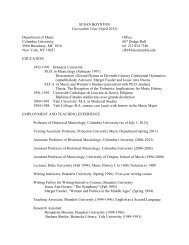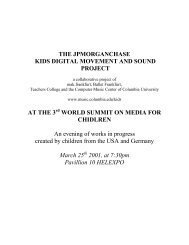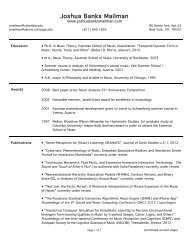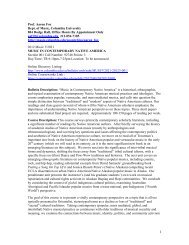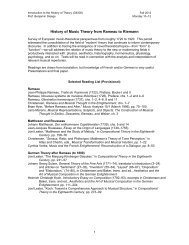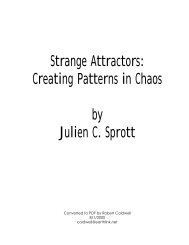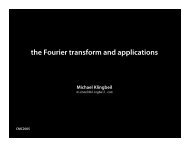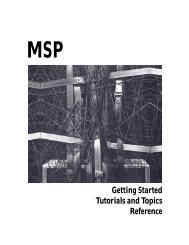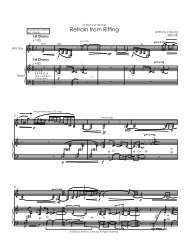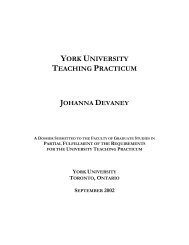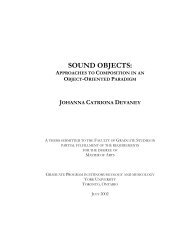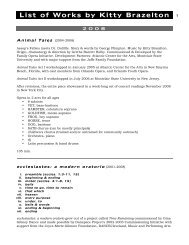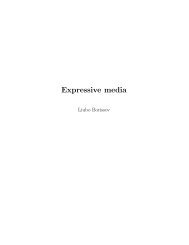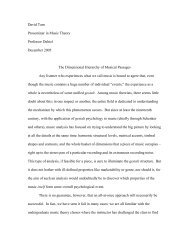Text, including the two scores - Columbia University Department of ...
Text, including the two scores - Columbia University Department of ...
Text, including the two scores - Columbia University Department of ...
Create successful ePaper yourself
Turn your PDF publications into a flip-book with our unique Google optimized e-Paper software.
this point, <strong>the</strong> program is finished, and I have raw material from which to extract musical building blocks <strong>of</strong> <strong>the</strong> score. I listen to <strong>the</strong> result, mark moments <strong>of</strong> interest, and <strong>the</strong>n copy a selection (or family <strong>of</strong> selections) into a new sequence. I do a lot <strong>of</strong> decision-making and rewriting on a measure- After<br />
level: collapsing a polyphonic phrase into a monophonic phrase for an instrument, or distributing a polyphonic phrase across several instruments, or throwing away information if <strong>the</strong> phrase is too dense with notes, or adding material if it is too thin. From this point forward, however, my by-measure<br />
collapses into that <strong>of</strong> traditional composition. process<br />
DSP with FFTToolkit As far back as 2003, I was experimenting with Fast Fourier Transform (FFT) coding to do signal analysis and resyn<strong>the</strong>sis, building upon Perry Cook's library <strong>of</strong> FFT functions in <strong>the</strong> C programming language [1]. My initial 1.2<br />
aimed to design a morphing function to interpolate between <strong>the</strong> FFT frames <strong>of</strong> a sound. Those early seeds ultimately led, years later, to my own library <strong>of</strong> FFT code, which were designed as <strong>the</strong> basis to realize several specific compositional tasks that I devised. This library and set <strong>of</strong> specific applications experiments<br />
packaged and released under <strong>the</strong> generic name ‘FFTToolkit’. My primary goal for <strong>the</strong>se compositional tasks, in addition to solving were<br />
specific programming and algorithmic challenges, was to generate a large amount <strong>of</strong> aurally interesting material out <strong>of</strong> a limited body <strong>of</strong> samples. All three processes make a new sound out <strong>of</strong> multiple sample sources, and a resultant sound is necessarily defined as associations (whe<strong>the</strong>r near, far,<br />
<strong>the</strong><br />
6



